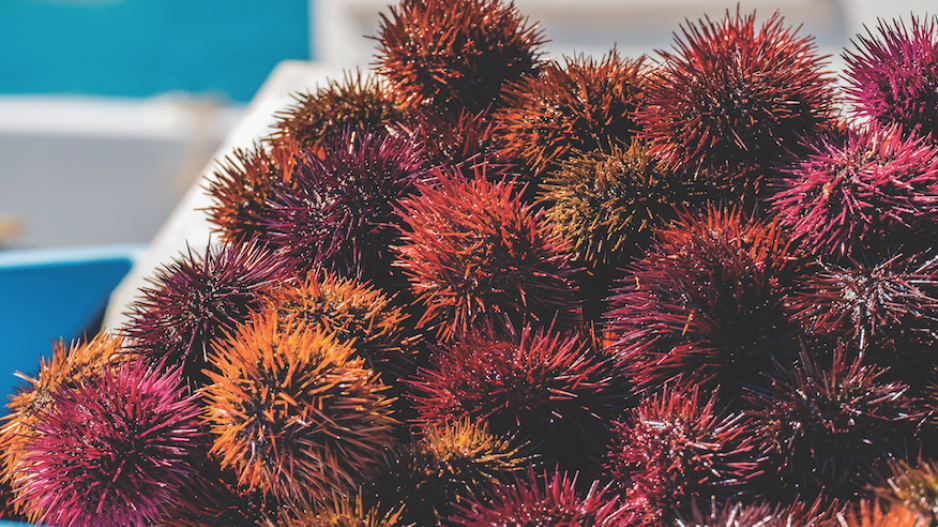Entrepreneurs are eager to start farming sea urchins thanks to a recent B.C. aquaculture trial that successfully fattened the creatures, making their prized gonads more valuable.
The 12-week trial, which took place this spring off the coast near Nanaimo, used special trays and a new proprietary feed from Norway’s Urchinomics to fatten the urchins and make their edible gonads bigger, tastier and more colourful – factors that increase the seafood’s value in the prime export market of Japan.
Sea urchin, along with geoduck, are much more popular with Asian diners than counterparts in B.C.
The gonads, which are often referred to as roe or uni, contain psychoactive cannabinoids similar to those found in marijuana.
The population of wild sea urchins, which are not fed the new proprietary feed, has mushroomed in B.C. waters to the point that many are malnourished.
B.C. exported $6.4 million worth of sea urchins in 2015, the last year for which statistics are available, and the lion’s share of those exports went to Japan. That’s an 18.2% jump in sea urchin exports compared with 2014 and a 142% increase compared with 2013. All of those exports were for sea urchins caught in the wild by licensed harvesters.
What makes getting into the sea urchin aquaculture business tricky, however, is that Fisheries and Oceans Canada – more frequently called the Department of Fisheries and Oceans (DFO) – has no policy framework that allows for the farming of sea urchins and has no intention of issuing new licences to allow operators to raise sea urchins in sea-based farms.
The only sea-based farms that the DFO will allow already have a special class of licence for farming a wide range of ocean creatures, including sea urchins.
So while the owners of farms that are eligible to raise urchins, such as SEA Vision Group Inc. principal Stephen Cross, plan to start farming sea urchins in the ocean within the next year or so, others say the way to get around DFO restrictions is to farm sea urchins on land.
DFO will grant new licences and allow entrepreneurs to farm sea urchins on land because its scientists believe land aquaculture will not affect the marine environment as much as farming in the ocean would, said DFO research scientist Chris Pearce.
Urchinomics’ Norway-based founder and principal, Brian Tsuyoshi Takeda, told Business in Vancouver he hopes to farm sea urchins in B.C. on land or, if the DFO allows, in the water.
“B.C. has some of the highest-quality sea urchins in the world, and it has the perfect climate to farm on land and sea,” he said. “Many of the areas where we see potential to farm urchins are in rural, coastal communities where job creation is paramount. So from a commercial, ecological and employment-creation perspective, B.C. may be the best place to make our case for urchin farming in North America.”
Pacific Coastal Shellfish CEO Daniel Rabu has received DFO approval for a 12-week trial in which he will farm sea urchins on land at the Gartley Point shellfish hatchery, near Courtenay, starting in August.
“Farming sea urchin on land will be more cost-effective than doing it in the ocean,” Rabu said, explaining that staff at land-based systems can simply drop food into tanks.
“In the ocean, you’ve got to get a boat, you’ve got to go to your tenure, or the farm site, you have to pull the cages out of the water and open the cages and feed the urchins. That is a lot more time-consuming and therefore more costly.” •




